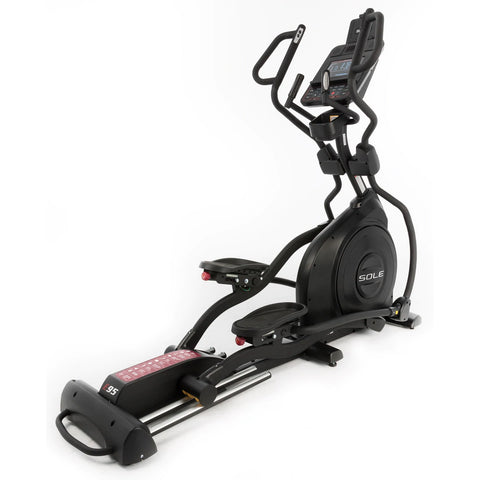
One of the most popular exercise machines today is the elliptical trainer or crosstrainer. Originally the elliptical trainer was just a lower body trainer developed by Precor and then Pro Form bought out their elliptical with an upper body motion and the elliptical crosstrainer was born.

They work by trying to get the feet to achieve a motion that is as near to the perfect ellipse as possible as this is the motion the feet would make if you were running but with no ground beneath you. Not only do they try to match the natural movement of the body they also provide an impact free workout as the feet never leave the footpads.
They were designed for people looking for a high intensity workout but require a low impact substitute to jogging or running.
Although they are immensely popular there is very little scientific research available to back up their effectiveness – until now.
The University of Wisconsin La Crosse carried out a two-part study to find out if these machines can actually produce the goods.
The first part of the study was to evaluate and compare the benefits against other exercise machines and in this case they used a treadmill, a stepper and an exercise bike. The second part of the study was to test and document the impact forces on the feet and skeletal system. Sixteen volunteers between the ages of 27-54 were recruited.
It was important that the participants felt comfortable on each machine and so they were allowed to ‘play’ with the equipment. After they had had plenty of practice and sorted out comfortable workloads they were then instructed to do a 20 minute workout per day on a different piece of fitness equipment. They were allowed to set the intensity level as the researches thought this to be a more realistic model as most people who buy or use exercise equipment tend to exercise at their own pace. Their heart rates, oxygen consumption, perceived exertion and calorie expenditure were all monitored during each session.
On a separate day the group had wafer thin inserts placed in their shoes that was interfaced to a computer which measured the impact forces produced through the entire gait of each foot. They then had to workout on each item of fitness equipment and the peak forces were represented as a percentage of each persons body weight.
The University of Wisconsin-La Cross results:
Heart rate and oxygen consumption were virtually the same on an elliptical as running on a treadmill but the ground forces on an elliptical was similar to walking where as running on a treadmill was almost 2.5 times body weight. Also using an elliptical produced significantly higher heart rate and oxygen consumption than the exercise bike and the stepper although rates of perceived exertion (RPE) were identical on all items of fitness equipment. RPE was measured on the Borg Scale 6-20 and the average on all pieces was 12.8 or ‘somewhat hard’ as the majority of the volunteers described it.
Other Studies
Another study carried out by the University of Mississippi compared four home brands of ellipticals. The study came out with similar results of the University of Wisconsin-La Crosse findings. The heart rate and RPE was almost the same on all ellipticals with a average heart rate of 72 percent of maximal heart rate and a RPE of 12.5-13 on the Borg Scale. However what came out of this study was the different ‘feel’ and the quality of different machines. The intensity that could be achieved on each machine was, as has been shown, very similar but ‘feel’ of the workout varied tremendously and had a huge impact on the desire to workout. Some machines provide more of a circular or stepping motion or an egg shape ellipse, non which will provide the comfort of a more natural and a true shaped ellipse.
One study claimed that going backward on an elliptical burned 7 percent more calories than going forward although The University of Wisconsin-La Cross failed to substantiate this. They found forwards and backwards gave the same intensity. So the jury is still out on this. However what it can give is variety to the workout.
Conclusion:
Walking has long been known as one of the best low impact exercises you can perform reducing the problems of muscular and skeletal injuries now and in the future, but there is a limit to the level of intensity that can be achieved. For younger exercisers and fitter older individuals this is a real problem and is just not intense enough. Also people are living longer and more older people are excising than ever before. But inevitably age brings problems to muscle and joints but that still does not mean that their heart and lungs are not capable of a good workout.
Elliptical trainers can fill this void as they can provide a wide range of workout intensities but still minimizing injuries to muscle and joints of the lower extremities.
Need help and advice?
Give the Fitness Options team a call on 0800 4580081 or email sales@fitnessoptions.co.uk
